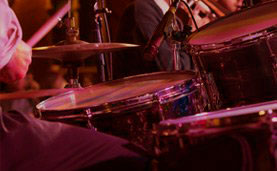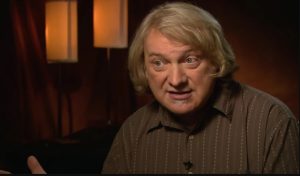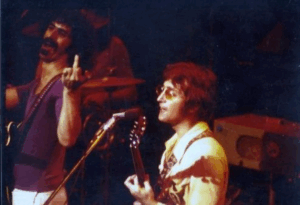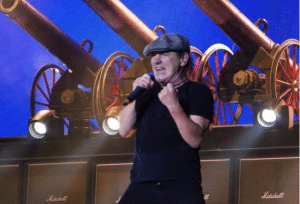1970s Box-Office Giants: The Top Film of Every Year, Ranked
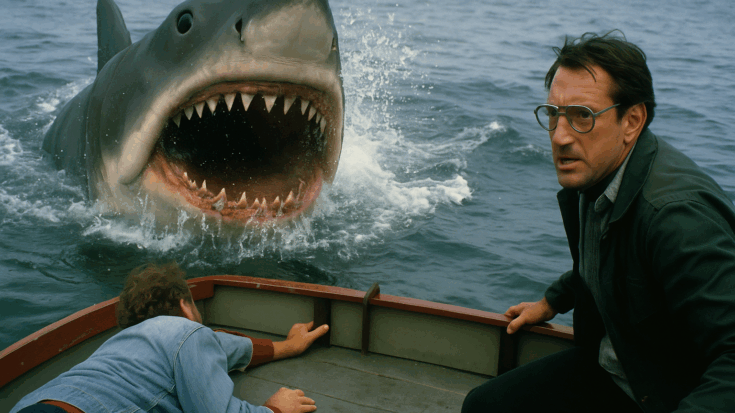
via Society or Rock
The 1970s delivered a streak of films that shaped modern cinema in ways still felt today. Each year seemed to produce a landmark release that redefined what audiences expected from storytelling, spectacle, and style. Whether viewed in crowded theaters during their original runs or rediscovered through modern formats, these titles continue to pull in new fans who are curious about the decade’s creative legacy.
This era stretched across an impressive range of genres. Horror took bold strides with films that pushed boundaries and rewired the rules of suspense. Big-budget disaster movies turned into cultural events, proving that audiences were eager for high-stakes action on a massive scale. Meanwhile, romances, musicals, and early superhero stories all found ways to capture imaginations and expand what mainstream filmmaking could accomplish.
Looking at the top-grossing film from every year of the decade offers a revealing snapshot of the industry during a period of rapid change. Behind the financial success of these movies are stories about evolving technology, shifting audience tastes, and studio gambles that paid off in surprising ways. Taken together, these box-office giants tell the fuller story of how the 1970s became one of the most influential periods in film history.
1970 – Love Story
Ali MacGraw and Ryan O’Neal carried “Love Story” with a sincerity that turned a straightforward romance into a cultural landmark. Audiences embraced its tragedy without hesitation, making it one of the decade’s most emotional box-office juggernauts. The film’s enormous worldwide haul, along with a stack of Oscar nominations, confirmed its place as the defining melodrama of 1970.
Despite coming from very different worlds, the two leads found the spark the story needed. MacGraw later spoke about how little they actually had in common, yet their chemistry unfolded effortlessly once the cameras rolled. It was that contrast — two actors with different backgrounds merging into one convincing partnership — that helped the film’s love story resonate across generations.
The production wasn’t nearly as smooth as the romance it portrayed. MacGraw learned the harpsichord for her role, O’Neal spent time mastering his ice-skating scenes, and the crew dealt with major setbacks after Harvard asked them to leave campus. Ironically, the school that once restricted filming eventually adopted the movie as a yearly tradition for incoming students.
1971 – Diamonds Are Forever
Sean Connery’s return as James Bond in “Diamonds Are Forever” gave the franchise a powerful jolt at a pivotal moment. Studio executives had explored multiple replacement options, but none matched Connery’s impact. The record-setting deal required to bring him back reshaped the film’s budget and made headlines long before the movie hit theaters.
The story itself — a mix of diamond smuggling, international threats, and an orbital superweapon — provided the brand of spectacle audiences expected from 007. Behind the scenes, the glamour faded quickly. Special-effects teams created the mud-bath sequence using instant mashed potatoes, which overheated under studio lights and had to be managed carefully. Meanwhile, Connery’s off-screen romance with co-star Jill St. John added its own twist to the production.
Even with heavyweight releases like “A Clockwork Orange,” “Fiddler on the Roof,” and “The Last Picture Show,” Bond dominated the year commercially. Premiering late in 1971 didn’t slow its momentum; the film drew in more than $100 million worldwide. It stands as that year’s quintessential blockbuster and a reaffirmation of Connery’s enduring pull as cinema’s most famous spy.
1972 – The Godfather
“The Godfather” arrived with a level of ambition that immediately set it apart, reshaping the gangster genre and leaving a seismic mark on the industry. Francis Ford Coppola guided a production full of tension, clashing opinions, and studio doubts, yet the finished product felt effortless — a sharp contrast to the storm behind the camera.
Al Pacino, still early in his career, had to fight through skepticism from executives who doubted he could anchor such a major role. Marlon Brando, stepping in as Don Vito Corleone, brought both brilliance and unpredictability, turning every moment on set into a calculated risk. Even in the editing room, political maneuvering threatened to push Coppola aside before momentum swung back in his favor.
Other films from 1972 — including “Cabaret,” “Deliverance,” and “The Poseidon Adventure” — made strong cultural impressions, but none matched the sweeping impact of “The Godfather.” Its worldwide earnings surpassed $250 million, making it the top-grossing release of the year and cementing its reputation as one of the most influential films ever created.
1973 – The Exorcist
“The Exorcist” carried an aura of unease from the moment production began. Strange injuries, sudden delays, and uncanny accidents swirled around the project, feeding the idea that something wasn’t right behind the scenes. Whether those stories reflected coincidence or something darker, they fueled anticipation for one of the era’s most talked-about releases.
On screen, the film pushed boundaries with its intense imagery and relentless atmosphere. The demands of the role left both Linda Blair and Ellen Burstyn dealing with real injuries, and a destructive fire forced the production to rebuild a major set. Years later, a small supporting actor’s murder conviction only deepened the film’s unsettling legacy and continued the conversation around its so-called curse.
Competing films such as “American Graffiti,” “The Sting,” and “The Way We Were” drew wide audiences, but none shook viewers quite like “The Exorcist.” Its box-office totals surged past $190 million, securing its place as the year’s biggest hit. Decades later, it still stands as a benchmark of cinematic horror.
1974 – The Towering Inferno
“The Towering Inferno” captured the peak of the 1970s disaster-movie boom with style, scale, and a star lineup built for maximum draw. Its skyscraper-in-flames premise provided a tense backdrop where characters fought through smoke, fire, and collapsing stairwells — all the ingredients needed for a high-stakes crowd-pleaser.
Producer Irwin Allen expanded his disaster-film reputation by staging an enormous and technically demanding production. Dozens of sets filled Fox’s largest soundstages, Paul Newman and Steve McQueen commanded among the decade’s highest salaries, and urgent situations on set occasionally turned real. McQueen’s instinctive response to help actual firefighters created one of the more charming pieces of trivia tied to the film.
While “Chinatown,” “Earthquake,” and “The Godfather: Part II” contributed heavily to 1974’s cinematic landscape, “The Towering Inferno” still carved out a dominating presence. It earned a pile of Oscar nominations, won multiple awards, and pulled in more than $130 million worldwide. Only “Blazing Saddles” surpassed it that year, making it one of the decade’s defining blockbusters.
1975 – Jaws
“Jaws” didn’t just dominate 1975 — it changed the way studios approached summer entirely. The film’s success turned a beachside thriller into a yearly box-office strategy, all while establishing Steven Spielberg as a rising force in Hollywood. Its impact stretched beyond the theater too, stirring a real-world fear of open water that became part of its cultural legacy.
The production itself was far more turbulent than the final product suggests. Filming on Martha’s Vineyard brought unpredictable weather, and the mechanical shark that was meant to carry the film repeatedly malfunctioned. The schedule stretched from the planned two months to nearly half a year, and the budget more than doubled as the crew fought to keep the project on track.
Those challenges ultimately paid off. “Jaws” swallowed the global box office with nearly half a billion dollars in its initial run, outpacing a strong slate of 1975 releases that included prestige dramas and cult classics. Its runaway success cemented the blockbuster era and paved the way for every major summer event movie that followed.
https://twitter.com/CinemaOfScreams/status/1935910487998583026
1976 – Rocky
“Rocky” became the underdog story that mirrored the journey of the man who wrote and starred in it. Sylvester Stallone refused every offer to hand his script to a more famous actor, choosing instead to take a small paycheck and gamble on himself. His conviction paid off as audiences connected to Rocky Balboa’s grit, humility, and rough-around-the-edges charm.
Stallone’s path to the film was filled with long odds. Before landing a studio willing to take a chance on his screenplay, he worked a string of odd jobs and endured a series of rejections. His hopes of joining the cast of “The Godfather” fizzled, pushing him to rethink his approach to the industry. Writing “Rocky” in just a few days gave him a breakthrough that changed his entire career.
Competition at the 1976 box office was fierce, with landmark titles like “Carrie,” “Taxi Driver,” and “A Star Is Born” drawing major attention. Even so, “Rocky” surged ahead, ultimately claiming the year’s top spot and picking up multiple Oscars. The film turned the Philadelphia Museum of Art steps into cinematic iconography and launched one of the most enduring franchises in film history.
https://twitter.com/RetroMoviesDB/status/1980382641204732252
1977 – Star Wars: Episode IV – A New Hope
The film known then simply as “Star Wars” arrived with modest expectations and exploded into a worldwide phenomenon. George Lucas feared the project wouldn’t land with audiences, but viewers immediately connected with its mix of space fantasy, adventure serial nostalgia, and groundbreaking effects. Overnight, the film reshaped the science-fiction landscape and Hollywood itself.
Casting the now-legendary trio wasn’t straightforward. Harrison Ford slipped into the Han Solo role after working with Lucas on “American Graffiti.” Princess Leia required a wide search, with Carrie Fisher ultimately winning out over a stacked lineup of young actresses. And Luke Skywalker became Mark Hamill only after numerous contenders — including Kurt Russell — failed to click in the right way.
The year also saw Spielberg release “Close Encounters of the Third Kind,” creating a friendly rivalry that would eventually produce future collaborations. As for “Star Wars,” its box-office total soared past $300 million, a staggering figure for the time. Adjusted for inflation, its success places it among the highest-grossing films ever released, establishing an empire of sequels, toys, and cultural influence still thriving today.
1978 – Grease
“Grease” delivered a potent blend of nostalgia, romance, and musical spectacle that made the 1950s feel newly alive for 1978 audiences. Adapted from the Broadway hit, the film paired youthful energy with mid-century aesthetics and quickly became a cultural touchstone. Despite its high-school setting, the cast’s older ages did nothing to dampen the charm.
John Travolta stepped into his leading-man era with ease, building on his earlier stage experience and breakout television work. Olivia Newton-John initially hesitated to join, worried about her age and accent, but a personal visit from Travolta helped ease those doubts. Once filming began, the pairing proved irresistible, giving the story a sweetness that balanced out the film’s edgier teen antics.
The soundtrack became a juggernaut in its own right, producing chart-topping hits that defined the summer. Songs like “Hopelessly Devoted to You” and “You’re the One That I Want” extended the film’s reach onto radio playlists worldwide. Even in a year stacked with attention-grabbing releases like “Halloween” and “Animal House,” “Grease” stood apart, securing a massive global haul and carving out a lasting legacy among movie musicals.
1979 – Superman: The Movie
“Superman: The Movie” marked a turning point for comic-book adaptations, proving they could be both grand and emotionally sincere. The film’s promise — that audiences would believe a man could fly — set expectations high, and the production committed fully to delivering. Long before CGI existed, the filmmakers created convincing flight sequences that stunned viewers and set new industry standards.
Bringing the character to life wasn’t simple. The script went through rewrites, the flying effects required additional funding, and the cast had to balance star power with authenticity. Marlon Brando negotiated a massive salary and profit share for just days of work, while newcomer Christopher Reeve underwent an intense physical transformation to embody Superman. The search for Lois Lane led to a long list of auditions before Margot Kidder won the role.
With heavy competition from “Apocalypse Now,” “Star Trek: The Motion Picture,” and “The Amityville Horror,” the year was stacked with major contenders. Even so, “Superman” soared to the top of the worldwide box office, earning more than $130 million and setting the template for decades of superhero films. Its influence continues to echo in every modern cape-and-cowl franchise.


